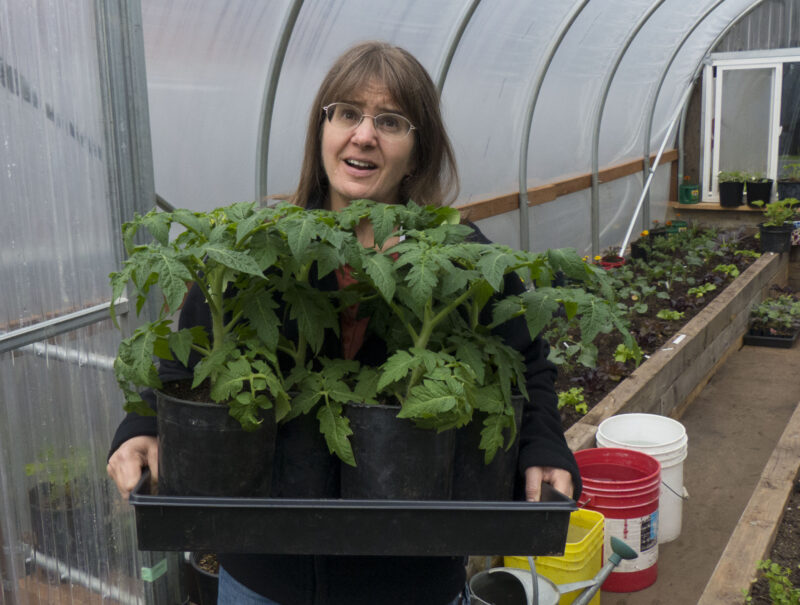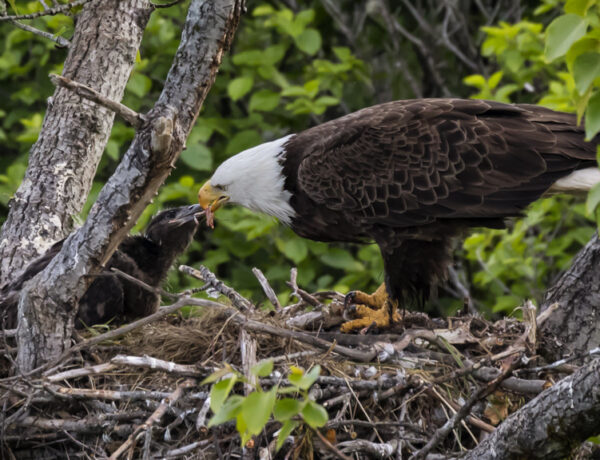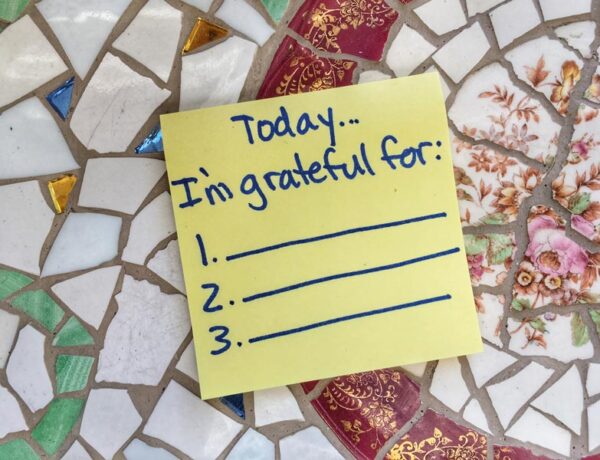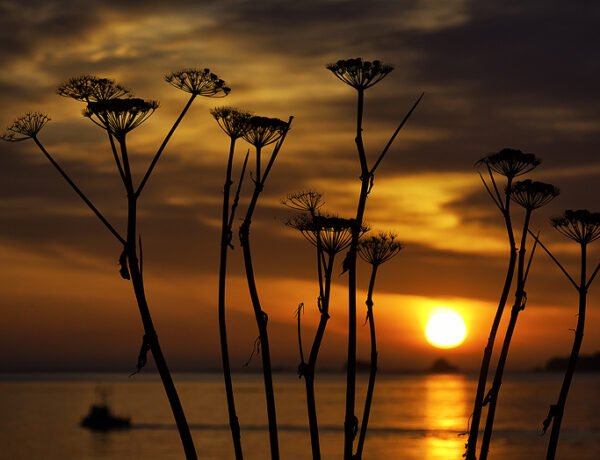What I’ve learned about gardening in Kodiak, Alaska:
- Carrots and kale thrive in our flip-flop coastal climate.
- Tomatoes and cucumbers thumb their noses at you.
Still we try. Tomatoes though, having traveled a few thousand miles to my dinner plate, are fit to photograph; but not fit to eat.
Tomatoes, as the rest of the world knows, crave warmth. So much so that an ideal temperature for these fussy plants lies between 70 and 92 degrees F. Seed Savers Exchange calls it the goldilocks zone. Too cold, say in the trenches of 32 to 50 degrees F, and tomatoes exhibit “cold stress” tantrums: leave shrivel and turn yellow; stems lose posture, and roots stop sucking up water. Oh, you want fruit to set? Forget it below 50 degrees, which happens to be a common outside temp in my spring and summer garden.
So, off to the greenhouse I go, with tomato plants, every day; twice a day. My neighbors probably find my agenda for the day more entertaining than TV: Take tomatoes out in the morning [to the greenhouse]; bring tomatoes back [into the house] at night; carry tomatoes out; bring them back in. Lift. Carry. Repeat.
You might be thinking at this point, “Marion, why don’t you rig a heater up in the greenhouse?” Good idea, until you realize that in spite of six wind turbines and a hydro power plant (together they provide an impressive 95 percent renewable energy resource for our island community), electricity costs .14 per kWh.
During one of those ah-ha moments for which I’m always grateful, the answer popped into my brain: What about Christmas rope lights? They generate a little heat; and don’t require much electricity…
So that’s what I did. I found a couple strings of clear, non-LED Christmas light on Amazon (For impressive quantities and colors: Christmaslightsetc.com). Then I pressed them into the dirt. The next morning, when I carried the trays of tomatoes out to the greenhouse, I simply rested them on top of the lights. A quick check of the soil thermometer showed the soil was 10 to 15 degrees warmer next to the lights–just the right amount for the root zones.

Non-LED Christmas rope lights warm the soil and spaces under and around tomato plants. The lights can also be installed in the soil after tomato seedlings (and other warm-loving plants like peppers and cucumbers) have been transplanted in the greenhouse beds. [Marion Owen photo]

Close-up of Christmas light “glo-worm” — an inexpensive and reliable way to warm soil in a greenhouse or hoophouse (also called a high tunnel). [Marion Owen photo]
I recently called in to Jeff Lowenfel’s Garden Party radio show, on Anchorage, Alaska’s AM 700 KBYR. Jeff, by the way, has the longest running garden column in the United States.
Jeff has a quick wit and we enjoy bantering back and forth on the air. “What you been up to?” he asked.
I told him about using Christmas rope lights to warm the soil in the greenhouse; a blessing since spring took its sweet time in coming.
After a pregnant pause (not recommended on live radio, but he was the host) Jeff filled the audio gap just in time.
“You’ve heard about tomatoes and red plastic mulch?” (According to Gardener’s Supply, red plastic mulch is supposed to improve yield and flavor of tomatoes and increase harvest by 20 percent.)
“Well hey, why not try red Christmas lights?”

According to Gardener’s Supply, red plastic mulch is said to improve yield and flavor of tomatoes and increase harvest by 20 percent. Would red Christmas lights do the same?





11 Comments
Mark McDonald
January 9, 2023 at 10:10 AMI am thinking of digging down in my soil then install garden plastic, 2” blue insulation box, wood covering, 150 watt heating mat 10”x40”, wood covering, garden soil, plastic cover on soil, then plastic covering above plants. Excessive power from solar panels and wind turbines automatically directed (electrical relay) to heating mat when available. I have excess power in summer.
Peter Bitschura
November 26, 2016 at 7:28 AMStumbled upon your article. The rope lights work well. They have harmed my seed trays for years. Good luck.
Tessa
March 3, 2014 at 10:27 PMNice idea! I’m getting tired of moving everything out every day too! Are these 120 volts?
marionowen
March 4, 2014 at 9:24 AMHi Tessa, Yes, I believe they are 110/120 volts. Happy gardening!
Tessa
March 4, 2014 at 10:18 AMThanks! I’ve been wanting to try this, maybe I’ll give it a shot. Here’s to a great year!
marionowen
March 19, 2014 at 8:48 AMYes, 120v. And remember to get non-LED.
marionowen
May 30, 2013 at 7:14 AMLet me know how it goes, Helen. I’m transplanting my tomatoes into the greenhouse today (May 30) and will wind the lights around the base of the plants to help them through the spring coolness. I like Sitka — fond memories of doing garden workshops there. Cheers, Marion
Helen Raschick
May 29, 2013 at 10:36 PMSitka is much like you describe Kodiak. I’m going to try this! Thanks for sharing your ideas.
Deb Elsey
May 27, 2013 at 9:18 AMI was wandering around reading articles on food and gardening on a link I found at alaskapublic.org. The link was to The Salt, I think. Any way, one of the articles was on pink houses. that are vertical gowing structures that use red and blue LED lights, saying that those are the spectrums that plants require for growing. It’ an aricle that is well worth checking out.
Keep up the good work. My tomatoes are still in the kitchen, Soon for the green house though, just have to clear the half the chickens are now occupying!
marionowen
May 27, 2013 at 11:12 AMThanks, Deb. I think it would be very interesting to rub the crystal ball to see what food production will look like 100, 200 years from now. My tomatoes are staying inside today… rain and fog. Too cool in the greenhouse.
Mary Lohr
May 26, 2013 at 8:48 PMI like her blog. Gardening from Kodiak island, Alaska.
Sent from my iPad